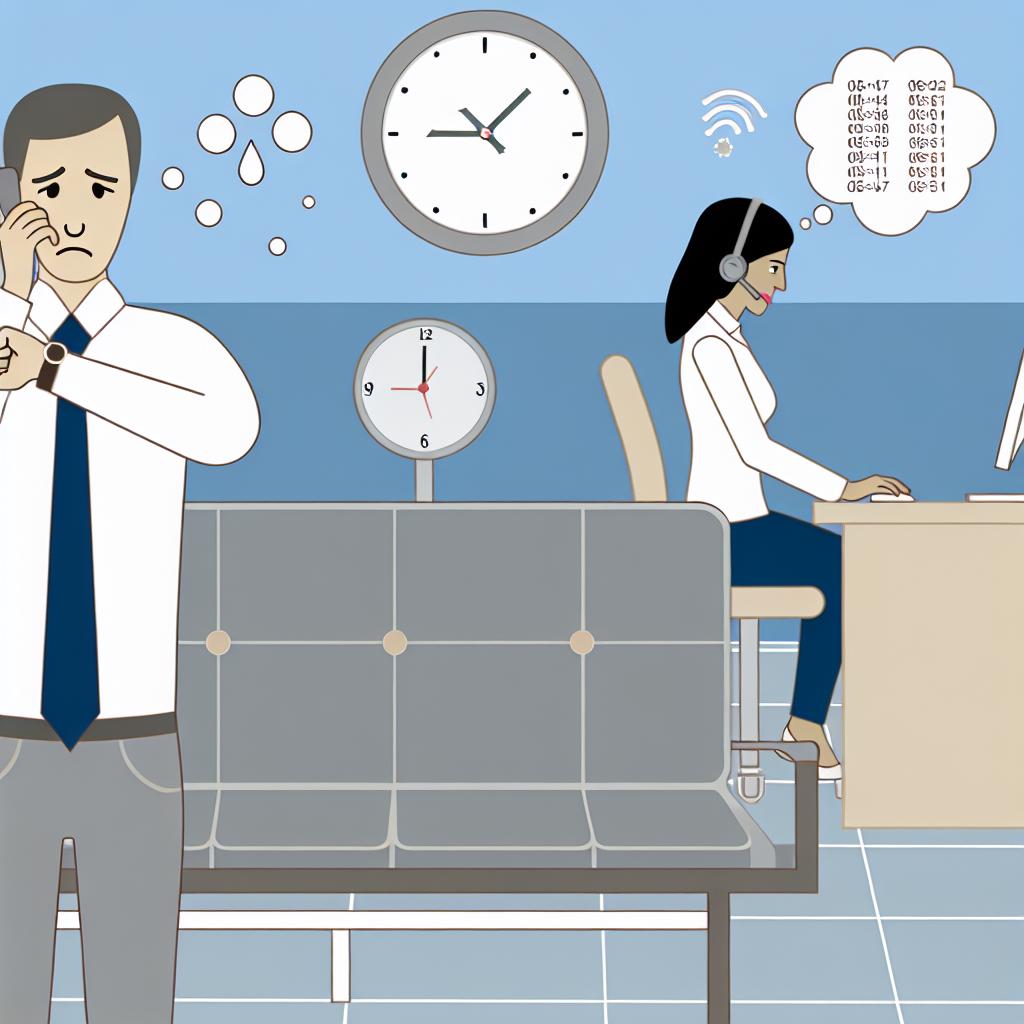Introduction: The Invisible Cost of Waiting
The expectations for customer service are higher than ever. Customers demand quick, efficient responses and are less tolerant of delays. But have you ever wondered why waiting can have such a profound effect on customer satisfaction? This blog dives into the psychology of waiting and explains why quick replies are crucial for building and maintaining customer trust.
The Psychology Behind Waiting
Waiting is more than just a test of patience; it’s a psychological experience that can influence customer perceptions profoundly. When customers have to wait for a response, they often experience anxiety and uncertainty. This feeling is exacerbated when there is no clear indication of when they will receive a reply.
Uncertainty leads to frustration. Customers start to feel neglected, and their perception of your brand begins to deteriorate. The longer the wait, the more negative the experience becomes. This is why it’s essential to address customer inquiries as quickly as possible.
Immediate Acknowledgment: The Power of Automatic Replies
One of the most effective ways to manage customer expectations is through automatic replies. When a customer reaches out, an immediate acknowledgment can make a world of difference. Automatic replies reassure customers that their inquiry has been received and will be addressed promptly.
Automatic replies set a positive tone from the start. They provide customers with a sense of security, knowing that their issue is in the queue. This initial acknowledgment can reduce anxiety and prevent customers from feeling the need to send multiple follow-up messages.
Setting Expectations with Receipts
Another powerful tool in the customer service arsenal is the use of receipts. Sending a receipt or confirmation email when a query is received helps set clear expectations. It informs the customer that their message has been logged and provides an estimated time for a response.
Receipts also serve as a tangible record of the interaction. They give customers something to refer back to and help manage their expectations. By clearly communicating the next steps, you can keep customers informed and reduce the likelihood of frustration.
The Role of Empathy in Customer Service
Empathy is a critical component of effective customer service. Understanding the emotional journey of your customers can help you respond in a way that meets their needs. Quick replies demonstrate that you value their time and are committed to resolving their issues.
Empathetic responses create a positive customer experience. When customers feel understood and appreciated, they are more likely to remain loyal to your brand. Quick, empathetic replies can turn a potentially negative situation into a positive one.
Building Trust Through Consistent Communication
Trust is the foundation of any successful customer relationship. Consistent and timely communication is essential for building and maintaining this trust. When customers receive quick replies, they know that they can rely on your brand to address their concerns promptly.
Consistency in communication also helps to reinforce your brand's reliability. By ensuring that every customer interaction is handled efficiently, you build a reputation for excellent customer service. This, in turn, fosters customer loyalty and positive word-of-mouth.
The Right Tools for Your Agents
To achieve quick response times, it's essential to equip your customer service team with the right tools. Errands handling systems, chatbots, and other customer service technologies can streamline workflows and enable agents to respond more efficiently.
Investing in the right tools for your agents can significantly reduce response times. These tools help automate routine tasks, freeing up your agents to focus on more complex customer issues. As a result, customers receive faster and more effective support.
Training and Empowering Your Team
Beyond tools, training and empowerment are key to effective customer service. Ensure that your agents are well-trained and have the authority to resolve issues quickly. Empowered agents can make decisions on the spot, reducing the need for escalations and delays.
Ongoing training ensures that your team is always up-to-date with the latest customer service techniques and technologies. By investing in your team, you create a customer service environment that prioritizes quick and effective responses.
Measuring and Improving Response Times
To maintain high standards of customer service, it's important to measure and analyze response times regularly. Use metrics such as average response time and customer satisfaction scores to gauge performance and identify areas for improvement.
Continuous improvement should be a core focus. By regularly reviewing and refining your processes, you can ensure that your customer service team is always operating at peak efficiency. This proactive approach helps maintain quick response times and high levels of customer satisfaction.
The Long-Term Benefits of Quick Replies
Quick replies do more than just resolve immediate issues; they have long-term benefits for your brand. Satisfied customers are more likely to become repeat customers and advocates for your brand. Positive experiences lead to positive reviews and referrals, which can drive new business.
In the long run, investing in quick replies and efficient customer service pays off. It strengthens customer relationships, enhances your brand reputation, and contributes to overall business success.
Conclusion: Prioritizing Speed in Customer Service
The psychology of waiting highlights the critical importance of quick replies in customer service. By understanding the emotional impact of waiting, using tools like automatic replies and receipts, and empowering your agents, you can provide a superior customer experience. Prioritizing speed in your customer service strategy builds trust, loyalty, and long-term success for your brand.
By addressing inquiries promptly and efficiently, you show your customers that you value their time and are committed to their satisfaction. Embrace the tools and strategies outlined in this blog to enhance your customer service and reap the benefits of happier, more loyal customers.


